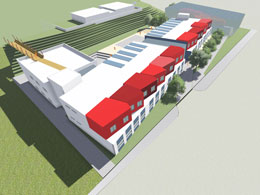STUDENTS PROJECTS
PROJECTS2013
Student: Anna Serasidou
Supervisor: Nikolaos Tsinikas
Aristotle University of Thessaloniki - Faculty of engineering
Presentation Date: July 2014
This diploma project concerns the design of a music High school in Polihni, Thessaloniki, accompanied by a concert hall that meets the needs of both the school and the whole city.
The music school is a combination of a conservatory and a school and therefore has some important differences compared to a normal school, affecting its design and operation. Students of a music school attend all the general education courses of a typical school, but also 2-3 hours of daily extra musical education courses. So they daily spend 8-9 hours at their school (approximately 42 hours weekly) which makes the existence of music oriented classrooms and dining facilities a necessity for every music school.
The position, orientation and special terrain around our plot created some peculiarities in the positioning of the music school in it. The sharp elevation and the slope, which reaches approximately the 10 meters (as shown in sections), created by various earthworks in the adjacent southwest plot, create particular shading conditions in the south part of the plot. Therefore the school building is placed in the northern part of the plot to ensure the best possible insolation-lighting of classrooms and the maximum heat gain in winter. For full exploitation of the solar gains, the building mass is shifted so as its long side is completely perpendicular to the North - South axis.
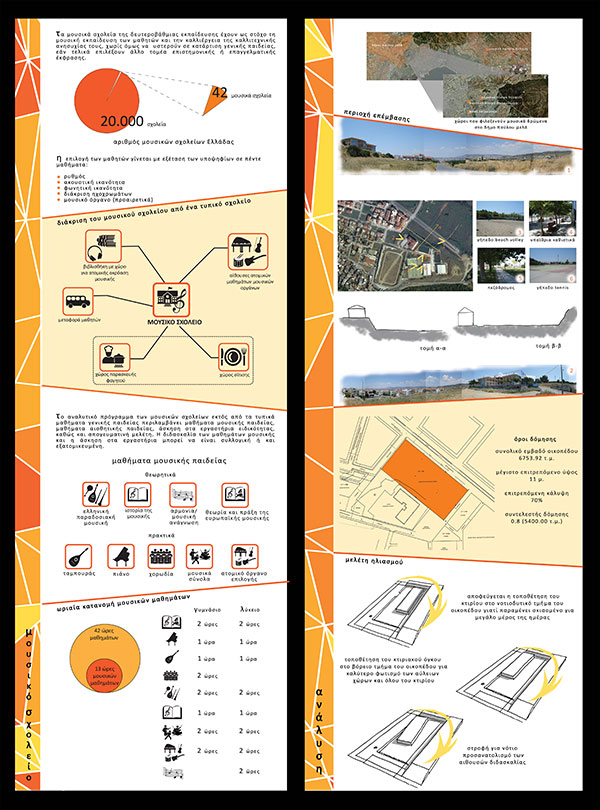
Another remarkable feature of the musical school is the large building program which includes normal classrooms, laboratories, general musical education classrooms, 24 classrooms for individual musical courses, administration offices, a library and a concert hall. This is a total of 5,300 square meters developed on two floors and a basement.
The design of the music school is directed from the small scale of a classroom to the large scale of the whole school, with focus on functionality, good acoustics, soundproofing and of course on creating a friendly environment for the students who spend most of their day at this school. Both normal classrooms and those designed for musical courses are not built with the typical rectangular shape. They are designed with a trapezoidal shape without parallel walls, for the best possible acoustics of the spaces.
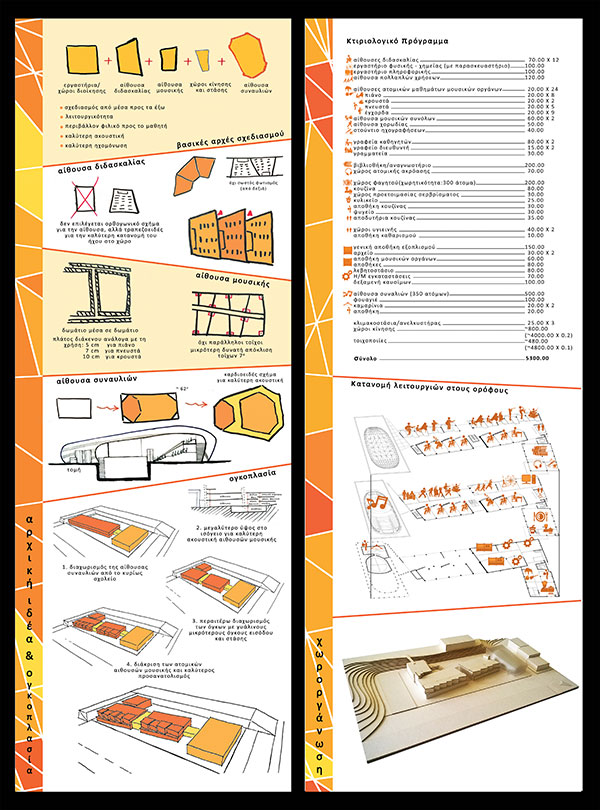
Furthermore, the individual classrooms for the musical instrument lessons, as well as those of the choir and ensembles, follow the same trapezoidal floor plan design, without palarell walls in order to avoid unwanted sound reflections. They follow the design principle of "room within a room". Depending on the type of the musical instrument each classroom is intended for, a different handling of the side walls is selected, by increasing or decreasing the gap between them for the optimum acoustic insulation. In addition, an omnifusor is installed in one wall of each one of the classrooms and in its opposite wall a cavity resonator to absorb low frequencies. Furthermore, double doors and windows are selected for optimal soundproofing.
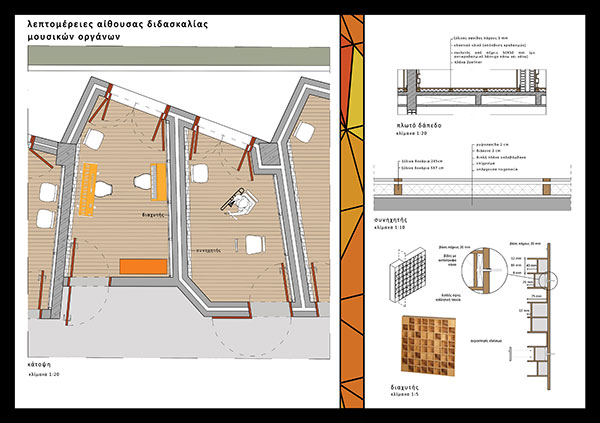
The concert hall, with a capacity of 350 people, is designed as a symbol for the city both through the intense care for its acoustics and through its particular design. It consists of an inner, introvert, diamond shell, surrounding the main stage and the spectators' space, and an extrovert, trapezoid, glass shell, which houses the inner shell and the entrance and movement areas. The inner shell ensures the "isolation" of viewers and their focus on the musical or theatrical play, while the outer shell highlights the function of the room as a bright "music ark". The room features a circular rotating stage capable of covering the needs of small or large ensembles and plays. The structural body of the inner and outer shell consists of metal frames associated with hollow beams. Special consideration is given to the design of the hall's acoustics with a specialized network of reflectors and sound absorbing materials.
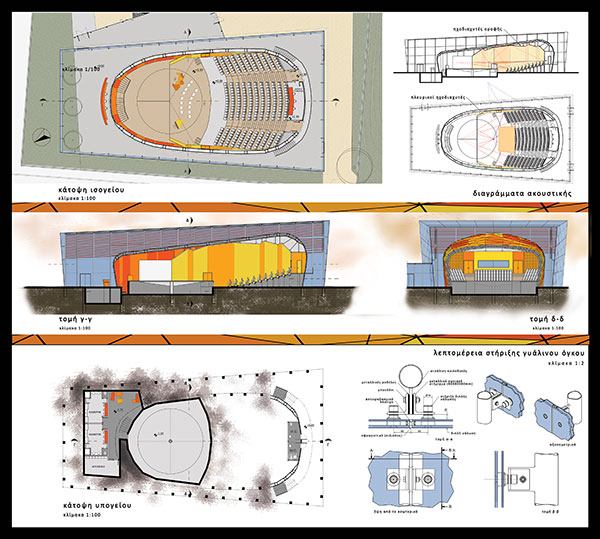
The final building volume arises by linking and integrating these individual classrooms with the irregular trapezoidal shapes. The school consists of three parts, separate but at the same time connected with glass elements. The first and largest one includes the main facilities of the school (classrooms, laboratories, individual classrooms for music lessons and administrative areas). The second, more rectangular, building volume includes some additional but important facilities of the school, namely the library, a recording studio and the dining and kitchen area required at each music school. The final part of the school is the concert hall.
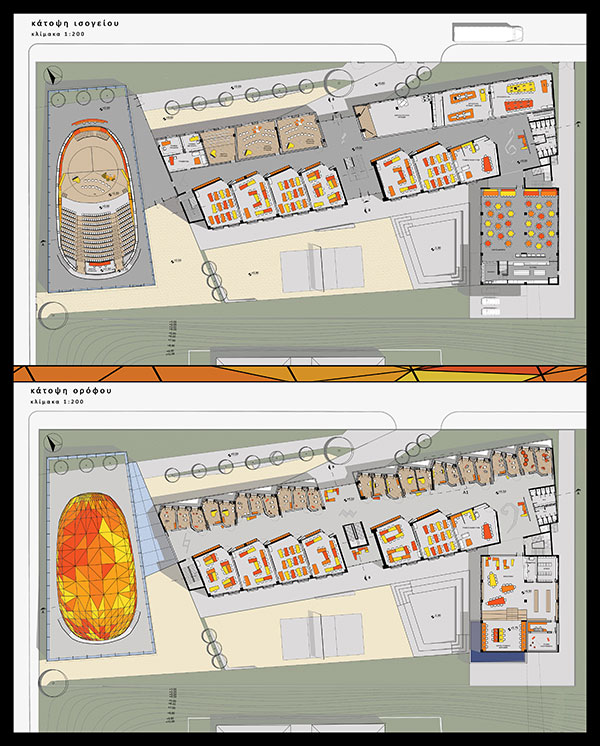
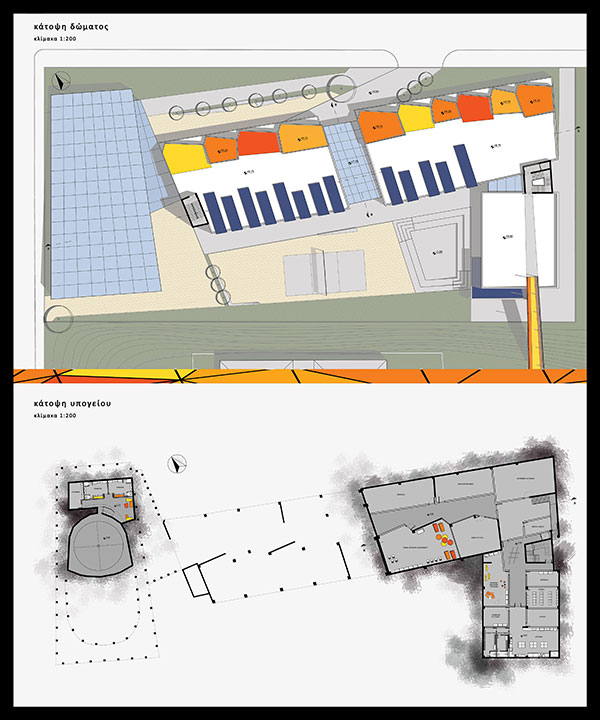

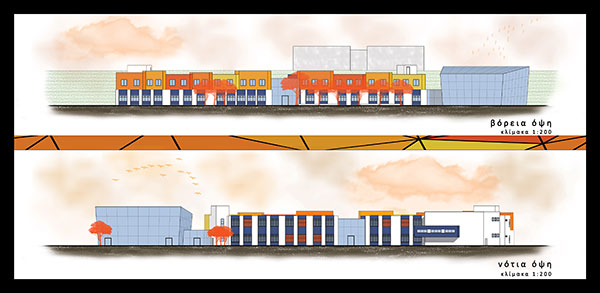
For easier and safer access of students to the neighboring public sports facilities and courts and because of the special terrain of the neighborhood, a bridge is designed to connect the roof of the library section with the adjacent southwestern plot where there are tennis, volleyball, and football courts, as well as a closed sports center with track and basketball court.
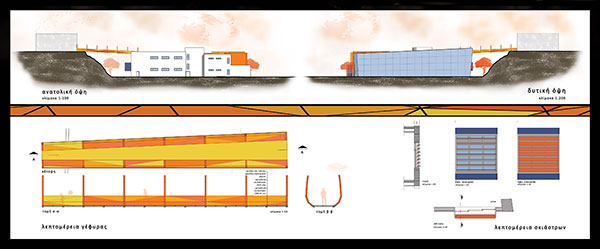
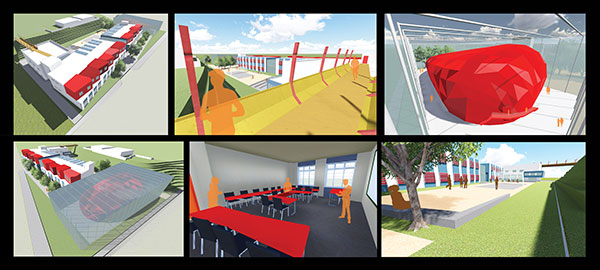
Related articles:
- Music high-school in Plato’s Academy ( 23 June, 2009 )
- ARSAKEIO OF TIRANA GREEKALBANIAN SCHOOL ( 23 June, 2010 )
- ARSAKEIO OF PATRAS ( 15 October, 2009 )
- School of architecture Patra ( 23 July, 2010 )
- Education for production_ School of industrial design engineering on Iera Odos ( 08 April, 2011 )
- Μodel Εducational Unit in Kozani ( 31 January, 2011 )
- Student Residence in Lofos Sikelias Neighborhood ( 02 March, 2011 )
- Experimental educational complex in Tagarades, Thessaloniki ( 03 March, 2011 )
- Independence Spaces - Hazelwood School Glasgow ( 01 May, 2011 )
- Tellus Nursery School ( 29 December, 2013 )
- Pio Baroja Nursery, learning from playing ( 07 June, 2014 )
- School center in Ambelokipi (High School - Μidle School) ( 20 March, 2012 )
- Concrete production plant reformation ( 05 April, 2012 )
- Primary school ZV Zavelput ( 14 April, 2012 )
- International architectural competition. Innovative, bioclimatic, European school complexin Crete, Greece ( 03 February, 2013 )
- Raw Inside ( 28 February, 2013 )
- Nest and flight ( 18 April, 2013 )
- Dance and Music Art Center (DaMAC) in Klafthmonos Square ( 07 July, 2013 )
- Artistic high school near the House for the Elderly in Athens ( 20 September, 2013 )
- Diffuse school in the urban tissue of Patras ( 20 April, 2014 )
- Towards a social school ( 11 November, 2014 )
- Greek High-School, Laniteion ( 17 March, 2015 )
- An alternative music academy ( 25 March, 2015 )
